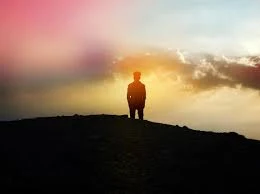Thursday, 12 November 2020
Durability
Tuesday, 10 November 2020
Remembering Ken Saro-Wiwa and Ogoni activists executed for nonviolent resistance to destruction of Indigenous lands.
"Dance your anger and your joys,
Dance the military guns to silence,
Dance oppression and injustice to death,
Dance my people,
For we have seen tomorrow
And there is an Ogoni star in the sky."
— Ken Saro Wiwa - Hung for opposing Shell
Saturday, 7 November 2020
Coronavirus: Insights from Albert Camus' 'The Plague'
Born in extreme poverty, on the 7th of November 1913 in French occupied Algeria, to an illiterate mother who was partially deaf, who lost his father in the horror that was World War 1, and despite tremendous disadvantages by the age of 44 he was collecting the Nobel Prize for literature.
Thursday, 5 November 2020
Remember, remember, the fifth of November Gunpowder treason and plot
Fawkes returned to England with fellow English Catholic Thomas Wintour, who introduced him to Robert Catesby. There were 13 conspirators all together, Guy Fawkes, Thomas Bates, Robert and Thomas Wintour, Thomas Percy, Christopher and John Wright, Francis Tresham, Everard Digby, Ambrose Rookwood, Robert Keyes, Hugh Owen, John Grant with Robert Catesby being the true ringleader.
Fawkes at the time said his only regret was that the plot was foiled. When he was asked why he was found with so much gunpowder he said “to blow you Scotch beggars back to your native mountains.”
Despite attempting to kill the new king of England, James I apparently praised Fawkes for being dedicated to his cause and for having a ' Roman resolution.'
Remember, remember, the fifth of November Gunpowder treason and plot
We see no reason
Why Gunpowder treason Should ever be forgot ….
Guy Fawkes, guy, t'was his intent
To blow up king and parliament.
Three score barrels were laid below
To prove old England's overthrow.
By god's mercy he was catch'd
With a darkened lantern and burning match.
So, holler boys, holler boys,
Let the bells ring.
Holler boys, holler boys,
God save the king.
And what shall we do with him?
Burn him!
Monday, 2 November 2020
A.J.Cook - Militant Miner and Trade Union Leader ( 22/11/1884 - 2/11/31)
Balfour Declaration’s 103rd Anniversary prompts calls on Britain to apologise and recognize Palestinian rights
" His Majesty's Government view with favor the establishment in Palestine of a national home for the Jewish people, and will use their best endeavours to facilitate the achievement of this object, it being clearly understood that nothing shall be done which may prejudice the civil and religious rights of existing non-jewish communities in Palestine, or the rights and political status enjoyed by jews in any other country."
The Original Letter of the Balfour Declaration

Saturday, 31 October 2020
Samhain Reflections
Bright Blessings (A Poem for Samhain )
today is one of celebrating light,
time to remember the paths of ancestors
forever casting their eternal beams,
goddesses returning, resurrecting feeling
whispering enchantment, releasing power,
as the veil of life gets thinner and dimmer
time to welcome old spirits that walk among us,
that enable us to dance and sing again
beyond this realm allows us to be blessed,
as leaves turn golden, and fall to nourish the land
under trees branches we can all nobly stand,
mother earth reaching out offering protection
absorbing our longings, accepting our wrongs,
in the vortex of time, keeps on shining bright
guiding us as we follow ancient paths of wisdom,
slipping through time, surrounded by love
allowing truth and justice to be the natural law.
( when the barrier between the worlds is whisper-thin and when magic, old magic, sings its heady and sweet song to anyone who cares to hear it.
~Carolyn MacCullough, Once a Witch)
Thursday, 29 October 2020
Diane di Prima, Pioneering Feminist Beat poet and activist, dies at 86
Falling out of attention.
Wiping gnarled fingers on a faded housedress.
Lying down in the puddle beside the broken jug.
Where was the slack, the loss
of early fierceness?
How did we come to be contained
in rooms?”
Left to themselves people
grow their hair.
Left to themselves they
take off their shoes.
Left to themselves they make love
sleep easily
share blankets, dope & children
they are not lazy or afraid
they plant seeds, they smile, they
speak to one another. The word
coming into its own: touch of love;
on the brain, the ear.
Wednesday, 28 October 2020
Sean Taylor - Herd Immunity (part 2)
In the UK more people have died from coronavirus than any other country in Europe. The delayed lockdown cost lives and was combined with both unclear and contradictory messaging. The release of untested patients into care homes led to thousands of deaths. It has taken over six months and between 40,000-60,000 deaths to bring in some airport testing and compulsory facemasks in most public spaces.
Deregulation, outsourcing and corruption has been the Conservative hallmark. The Tories have given contracts to unaccountable private companies (their friends and donors) who have failed to provide adequate PPE or a testing system that works.
In the last few years both America and the UK have become breeding grounds for far-right extremism. Conspiracy anti-lockdown fascists have been empowered by the racism of Trump and Johnson.
As an artist Sean Taylor uses his work to challenge a criminally negligent ruling class and the growth of fascism.
'Herd Immunity (part 2)'
written by Sean Taylor
Produced by Mark Hallman
Film by Reel News
Sean Taylor - vocals, piano and guitars
Mark Hallman - bass, drums & hammond organ
Joe Morales - saxophone
Homepage https://www.seantaylorsongs.com/home
Herd Immunity (Part 1)
https://teifidancer-teifidancer.blogspot.com/2020/06/sean-taylor-herd-immunity.html










